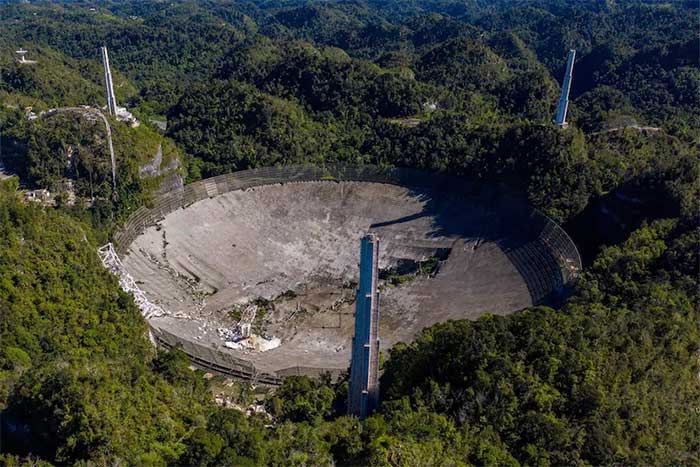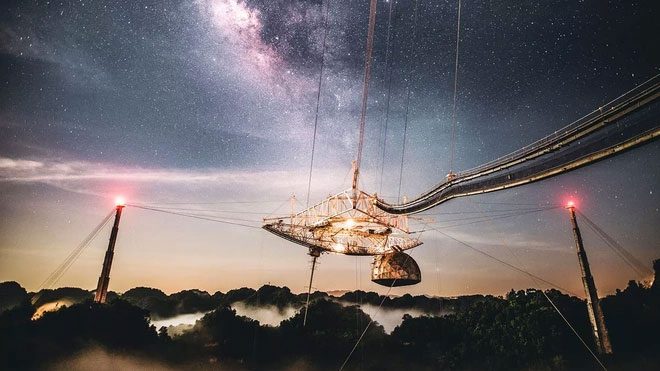Instead of repairing the telescope at the Arecibo Observatory, the U.S. National Science Foundation (NSF) plans to transform the site into a multidisciplinary educational center.

The Arecibo Observatory after its collapse in 2020. (Photo: Getty).
According to information from Space.com, the giant radio telescope at the Arecibo Observatory in Puerto Rico will not be rebuilt following its collapse in December 2020. Completed in 1963, the Arecibo Observatory was a crucial element in the fields of atmospheric research and astronomy.
The U.S. National Science Foundation (NSF) has confirmed that the Arecibo Observatory will not receive funding to repair the damage. The new educational project will also not include any long-term funding for the operational equipment at the observatory.
“Despite requests from scientists, the NSF has decided not to rebuild the telescope. We anticipated that they would close the entire facility,” said Abel Méndez, an astronomer at the University of Puerto Rico.
However, the NSF intends to turn the site into a science, technology, engineering, and mathematics (STEM) educational center based on the legacy of the observatory. The center is expected to open in 2023.

The giant radio telescope of the Arecibo Observatory before its collapse. (Photo: UCF).
“On October 13, the NSF confirmed plans to build a multidisciplinary educational center at the Arecibo Observatory in Puerto Rico. The center will expand on the research and materials available at the observatory while implementing a new educational program,” officials at the NSF stated in a press release.
The NSF further noted that the agency will provide $5 million over a five-year period for the new educational center. According to AP news, the NSF also plans to enter into a five-year maintenance contract with the observatory worth at least $1 million per year. Mr. Méndez believes that this funding will be sufficient to keep the observatory operational.
In 2017, when Hurricane Maria struck Puerto Rico, the observatory was somewhat affected. In August 2020, a supporting cable snapped, creating a crack over 30 meters long on the dish. These incidents severely impacted the structure of the telescope.
Then, in December 2020, the 820-ton structure of the telescope detached from its steel cables and fell onto the 305-meter-wide dish below, causing the Arecibo Observatory to collapse overnight.
According to Space.com, this marks a sad ending for an icon of the astronomy field. For scientists, Arecibo was a vital tool in exploring the universe.
They used the telescope at the observatory to study asteroids as they passed near Earth, calculating the time for intervention before potential collisions.
In 1967, Arecibo achieved its first “milestone” by discovering that Mercury takes 59 days to complete one rotation, not 88 days as previously thought.
Scientists also utilized Arecibo to search for signs of extraterrestrial life. In 1974, the observatory transmitted the strongest radio frequency signal Earth has ever sent into space to search for life on other planets.





















































